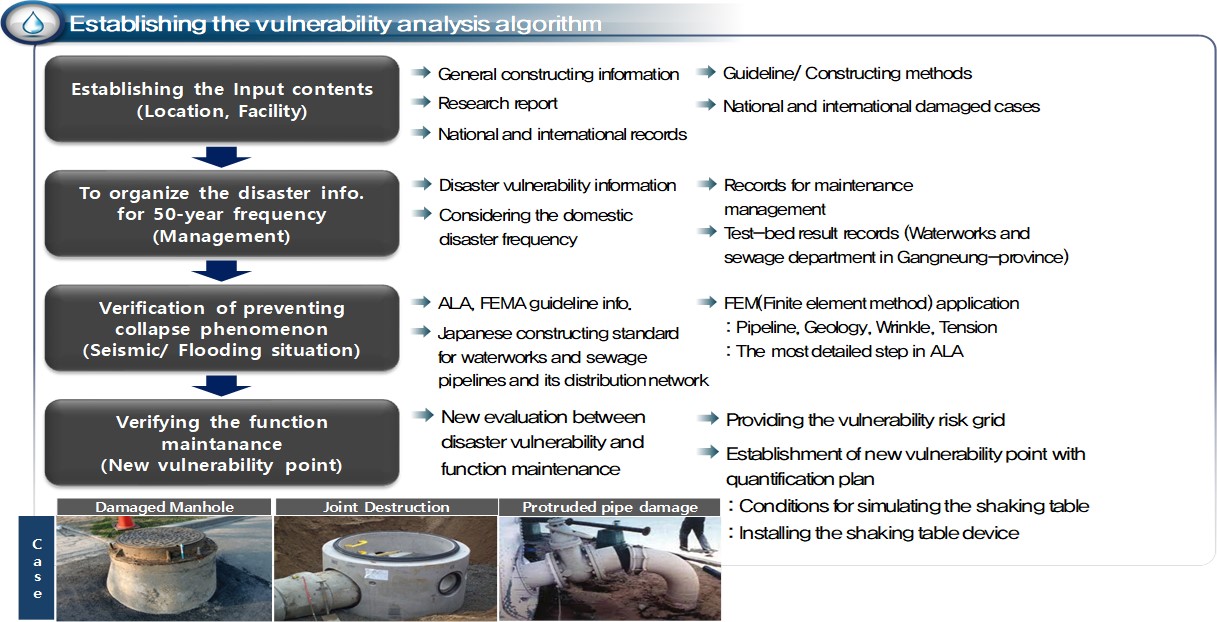Topics
Home > Research > TopicsEnvironmental Materials & Membrane Process Laboratory (Professor Jong-Oh Kim )
Research fields of Environmental Materials Laboratory can be divided to three parts such as fabrication of nanomaterial for environmental usage, treatment of wastewater using AOPs (Advanced oxidation processes) and resource recovery.
For fabrication of environmental nanomaterial, nanomaterials were developed for purification of environment using TiO2, Fullerene, Graphene. Rather than using ultraviolet of photocatalytic reaction, water purification using visible light has been studied.
Researchers in the lab have also developed MIO (Magnetic Iron Oxide) for phosphate adsorption and desorption in wastewater. Using the prepared MIO, the advantages are inexpensive maintenance costs and ease of maintainance.
In addition, reduction of organic matter in RO retentate using AOPs (Advanced oxidation processes) has been studied.
In waste water treatment, membrane technology is becoming increasingly important. With the help of ultra/microfiltration, it is possible to remove particles, colloids, and macromolecule. Important technical applications include the production of drinking water by reverse osmosis, filtrations in the food industry.
.
Current Research Projects
Phosphate recovery resource utilization technology
Under base of the nanotube with developing phosphate adsorption and desorption materials, electrochemcial method is used as to create an assembled nanotube. Electrolyte type (Ammonium flouride, Ethylene glycol, etc.) with major operating conditions (conentration, voltage , time, temperature and electrode materials) are the characteristics of nanotube material for its experimental evaluation(diameter, length, surface area, zero charge point and zeta charge). To enhance phosphate adsorption/desorption efficienct, such as Zr, La, Ti and Carbon-based are used under Sol-gel, Hydrothermal and Electro-chemical methods. Under this conditions, an optimal composite nanomatieral is developed through surface deposition of the nanotube with evaluating the adsorption and desoprtion properties of the material.

Development of ozonated micro-bubble (AOPs) combined with flexible ceramic membrane process to treat non-degradable compounds
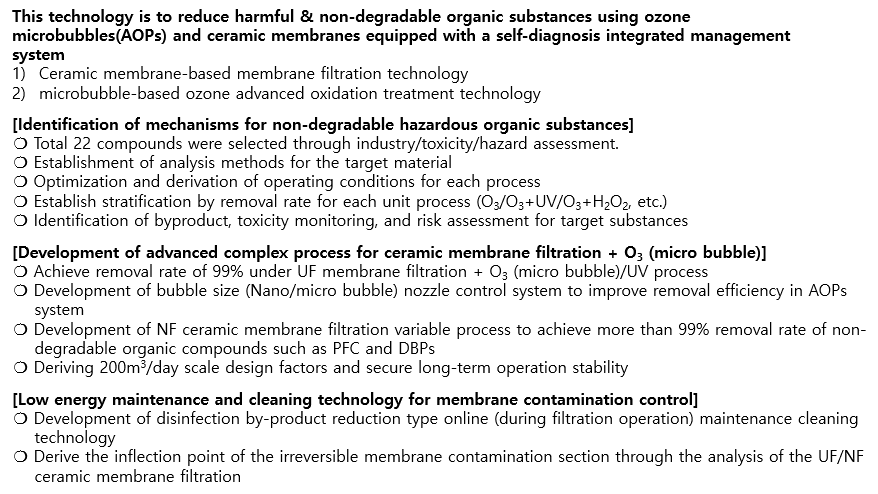
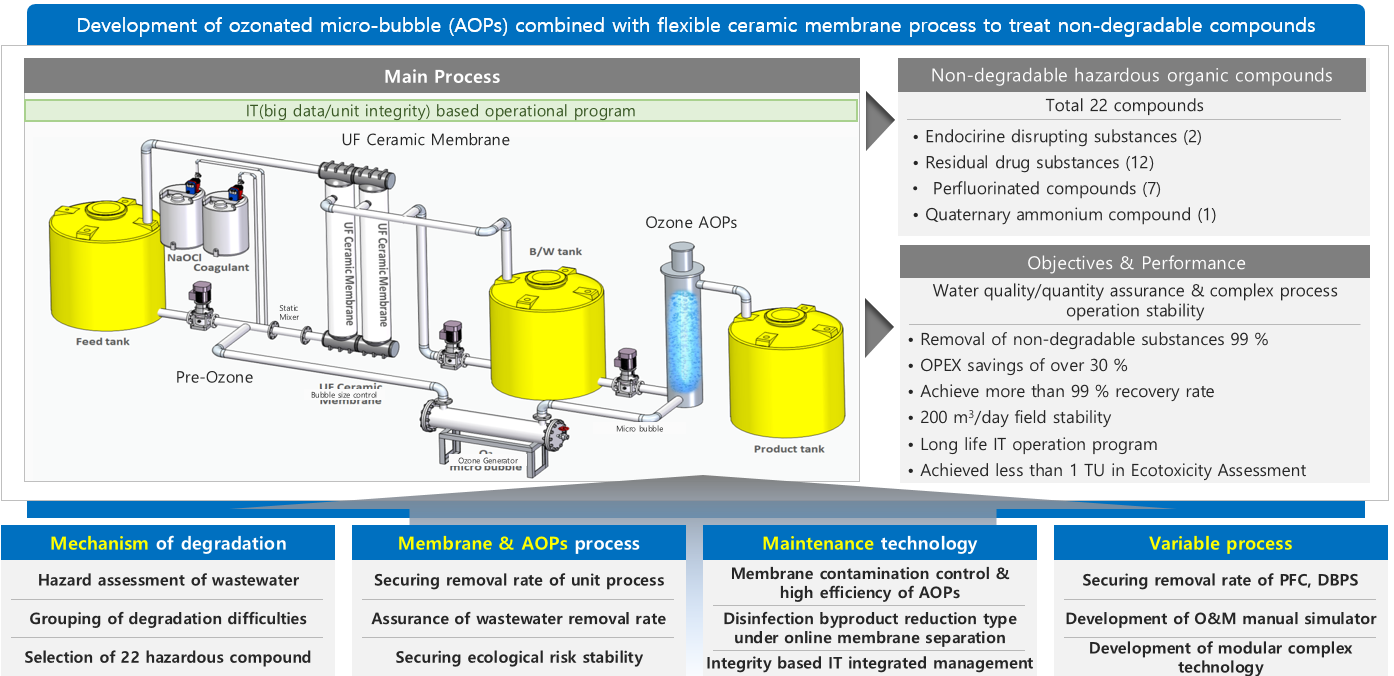
Energy and resource recovery technology for carbon Neutrality
As an important study for carbon neutrality, we develop absorbents to capture carbon generated from sewage treatment plants. The carbon dioxide captured in the absorbent is concentrated using reverse electrodialysis (salinity differential power generation) technology, and energy is recovered in this process. It is a technology that can convert concentrated carbon dioxide into useful resources such as formic acid by using an electrochemical method. Main research includes the development of absorbents to capture carbon dioxide, the optimal design of RED for energy recovery, and the development of electrodes for carbon dioxide resources.

.
Past Research Projects
Fabrication of environmental nanomaterials
Nanomaterials, with attractive chemical and physical properties, are being explored for their potential in energy and environmental applications. For example, when nanosized anatase TiO2 is illuminated by UV, it triggers an energetic response that can split water molecules to form hydrogen gas and oxidize pollutants to environmentally acceptable products. Pure titanium dioxide powders, however, have poor quantum efficiency and are difficult to recycle. Therefore, the development of photocatalytic complex nanomaterial for environmental purification and enhance its performance and recyclability is very crucial.
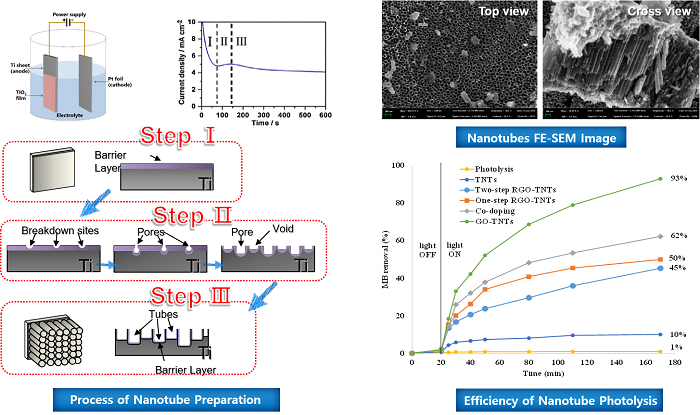
Membrane distillation
Membrane distillation (MD) process is a promising technology that can be used in desalination and various combinations of technologies (e.g. MD crystallizer). The MD process is attracting attention as a third-generation seawater desalination technology. However, there is no full-scale plant using MD due to technical difficulties. We are conducting air-gap MD (AGMD) plant scale-up to utilize MD process for desalination of seawater, optimizing the operation, effectively pretreat the feed solution, and studying on performance affecting factors by comparing with lab-scale AGMD. Also, we are currently working on possible modification to the configuration of AGMD to increase its performance by introducing negative pressure on the distillate channel, which is slightly different from vacuum MD (VMD).
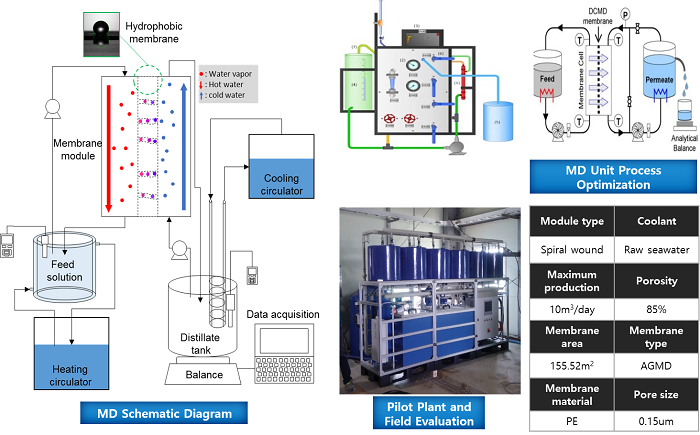
Membrane system
The research on aging is aimed at minimizing changes in properties and performance of membranes, suggesting optimum cleaning conditions to effectively remove membrane fouling, and optimizing the operation to reduce waste treatment costs by increasing membrane life. The ultimate goal is to determine the economic and reasonable life span by incorporating aging of the membrane and the performance changes. At present, the precedence of aging studies is said to be an important factor in minimizing the change of characteristics because the change in the properties of the membrane itself affects the performance. However, since the literature that interprets this correlation is rarely mentioned, the research will contribute to the interpretation of the aging mechanism by determining the effect of membrane properties on the membrane.
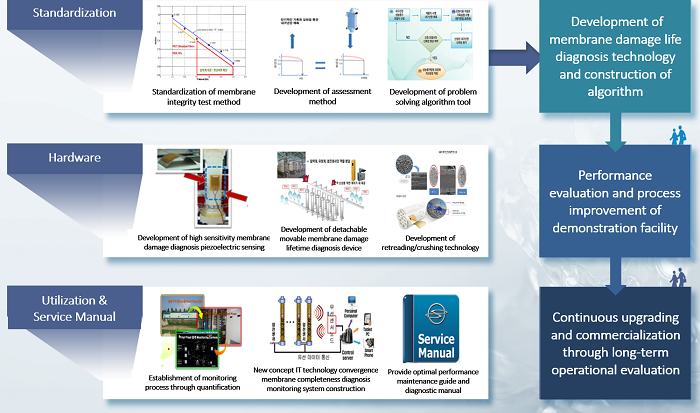
Coagulation and sedimentation process
The research is to develop monolithic coagulation/sedimentation system using ballasts that can effectively increase settling velocities to remove the high turbidity materials into the water due to climate change. The main goal is to achieve a stable water quality of less than 5 NTU turbidity and less than 7 mg/L of SS concentration. In addition to, it can reduce the site area by 70% compared with the existing process by increasing the hydraulic loading rate of 40 m/h. Main techniques in this study are magnetite-based ballasts, vortex mixer, sedimentation tank, hydro-cyclone and magnetic separator. To achieve the goals, we conduct jar-tester experiment, static-mixer experiments, image analysis method using CCD camera, CFD (Computational Fluid Dynamic), Mass balance, and Pilot-plant test. This research will minimize the site area without problems between existing water treatment processes and effectively solve the change of water quality due to climate change.
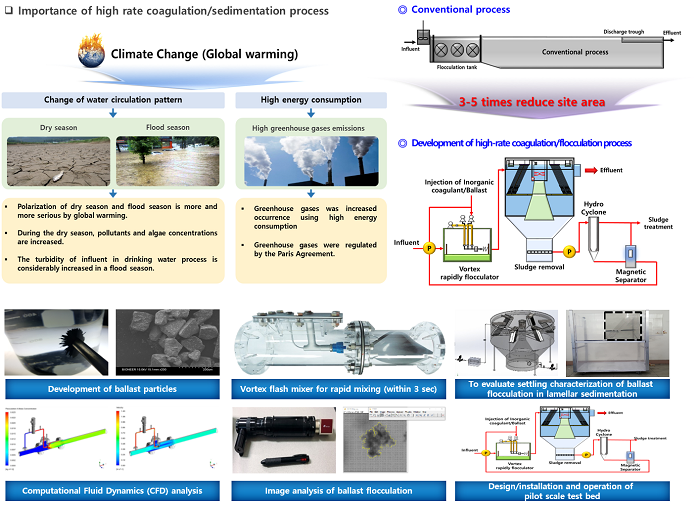
Membrane surface and spacer modification
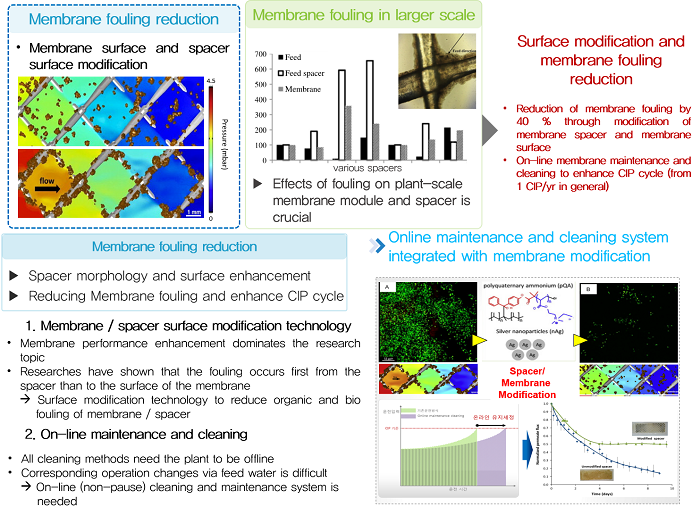
Vulnerability analysis of sewerline and water works under natural disasters
The modern urban system is served by the so-called lifelines, which ensures its survival in all different aspects like the blood system in humans. Among lifelines, water distribution networks are considered one of the most important and vital and its pipelines have been shown to suffer from heavy damages when stressed by seismic actions or floods. To overcome such event, vulnerability analysis technique was combined with the prediction of existing failure pipelines and the evaluation for risk impacts in each areas to improve strategic planning and preparedness to seismic and flood disasters.
